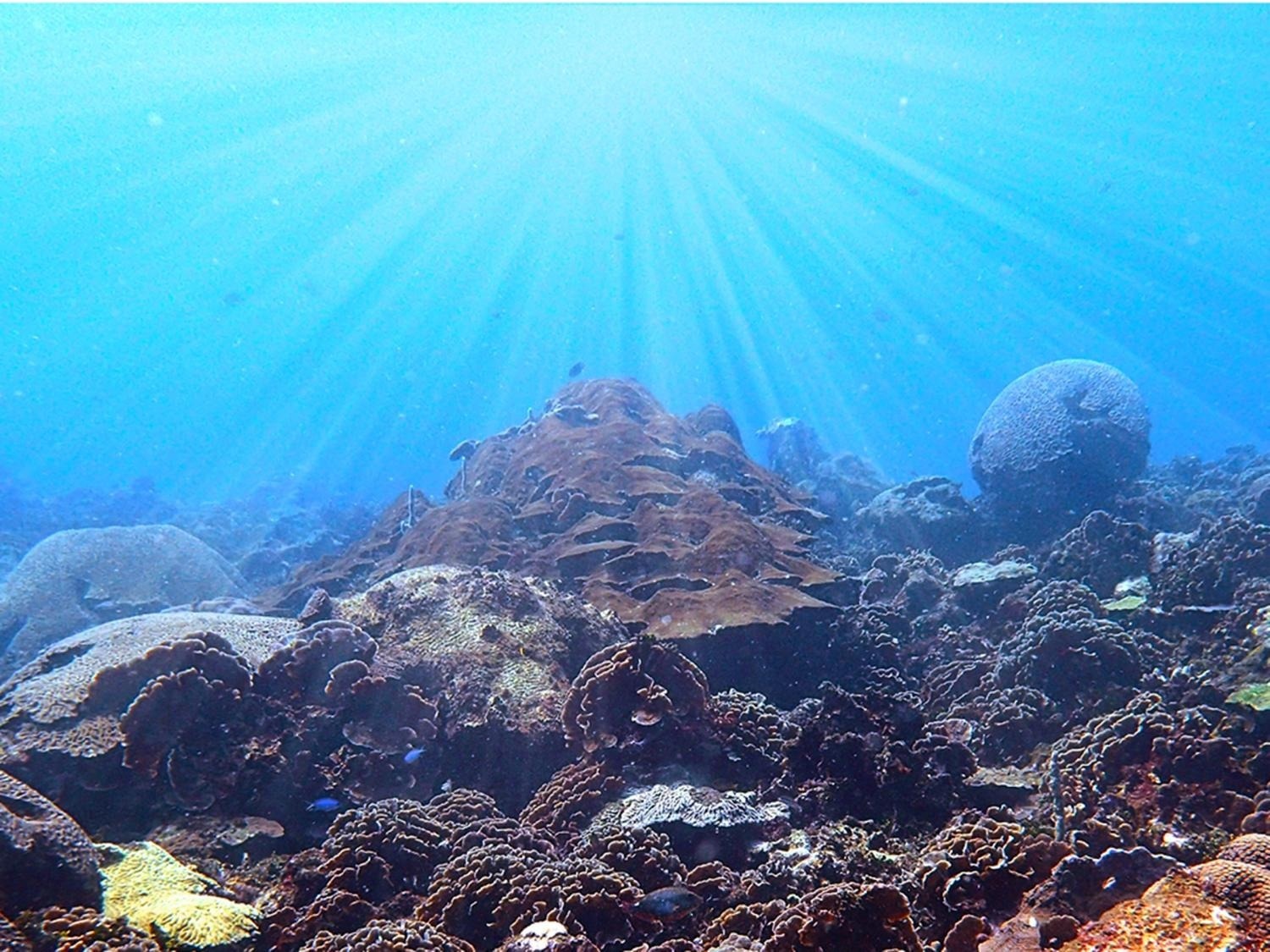According to new research from Pennsylvania State University, what occurs above the water’s surface is just as crucial to maintaining the world’s coral reefs as what occurs below it.
 Penn State researchers analyzed the productivity and biodiversity in the world’s symbiotic coral communities and found that the maintenance of water optical quality in coral reefs is fundamental to protect coral biodiversity and prevent reef degradation. Image Credit: Tomás López-Londoño / Penn State
Penn State researchers analyzed the productivity and biodiversity in the world’s symbiotic coral communities and found that the maintenance of water optical quality in coral reefs is fundamental to protect coral biodiversity and prevent reef degradation. Image Credit: Tomás López-Londoño / Penn State
In a study recently published in the journal Scientific Reports, researchers examined productivity and biodiversity in symbiotic coral communities around the globe. They concluded that maintaining coral reefs’ water optical quality is essential for preserving coral biodiversity and preventing reef degradation.
Coral reefs are one of the most biodiverse ecosystems on Earth. To better understand that diversity, we looked at the role sunlight plays in the symbiotic relationship between coral and the algae that provide the oxygen for its survival. We found that underwater light intensity plays a critical role in the energy expended by the coral’s symbiotic algae to maintain its photosynthetic activity.
Tomás López-Londoño, Study Lead Author and Postdoctoral Scholar, Pennsylvania State University
Although novel, the results are hardly a revelation, he said. The impact of sunlight on coral had not yet been fully understood, he said, despite the fact that science has long demonstrated that sunlight is the primary energy source for almost all biochemical reactions that sustain life on Earth.
López-Londoño added, “What is new here is we developed a model that provides a mechanistic explanation for the biodiversity patterns in coral. Central to that explanation is water clarity, meaning that preserving the underwater light climate should be a priority for coral reef conservation. It is as vital as pollution mitigation, limiting ocean acidification, and reducing thermal stress.”
A mathematical model that describes the relationship between the depth-dependent variation in photosynthetic energy to corals and gradients of species diversity was developed by the researchers through a study of coral grown in an aquarium under conditions that mimicked depth and gradations of sunlight.
They later tested the model using already-published data, comparing reefs with various levels of water clarity and patterns of marine biodiversity in hotspots worldwide. The productivity-biodiversity model developed by the team explained between 64% and 95% of the depth-related variation in coral species richness, showing that changes in sunlight exposure are largely responsible for this variation.
The model is very elegant in that it takes into consideration only two things. It looks at productivity, the potential that an alga has to extract energy from the sun, and the cost of living, the cost of the repair of the photosynthetic machinery. It is a very simple notion and we found it explains the existing empirical data.
Roberto Iglesias-Prieto, Study Co-Author and Professor, Biology, Pennsylvania State University
The researchers discovered that variation in sunlight-supported algal energy supply plays a significant role in the spatial variation of species diversity within coral communities after testing their model against global data sets.
The findings demonstrate that highly productive underwater environments with easy access to sunlight serve as an essential barrier against the threat of species extinction brought on by anthropogenic and environmental changes.
The research suggests a fresh approach to reef conservation: maintaining water clarity. According to the study’s findings, “the maintenance of water optical quality in coral reefs is fundamental to protect coral biodiversity and prevent reef degradation.”
“We tend to react reflexively against large-scale threats like ocean acidification and thermal stress from climate change. ting optical pollution, the answer is ‘everything,’” further added Iglesias-Prieto.
He stated that communities could protect their local seawater’s clarity by lowering the sedimentation and pollution brought on by human development, and anyone can help with this effort.
Iglesias-Prieto stated, “Unlike so much of the environmental threats that corals face, this is something that can and should be managed locally.”
The study received funding from Penn State’s startup funds.
Journal Reference:
López-Londoño, T., et al. (2022) Photosynthetic usable energy explains vertical patterns of biodiversity in zooxanthellate corals. Scientific Reports. doi:10.1038/s41598-022-25094-5.